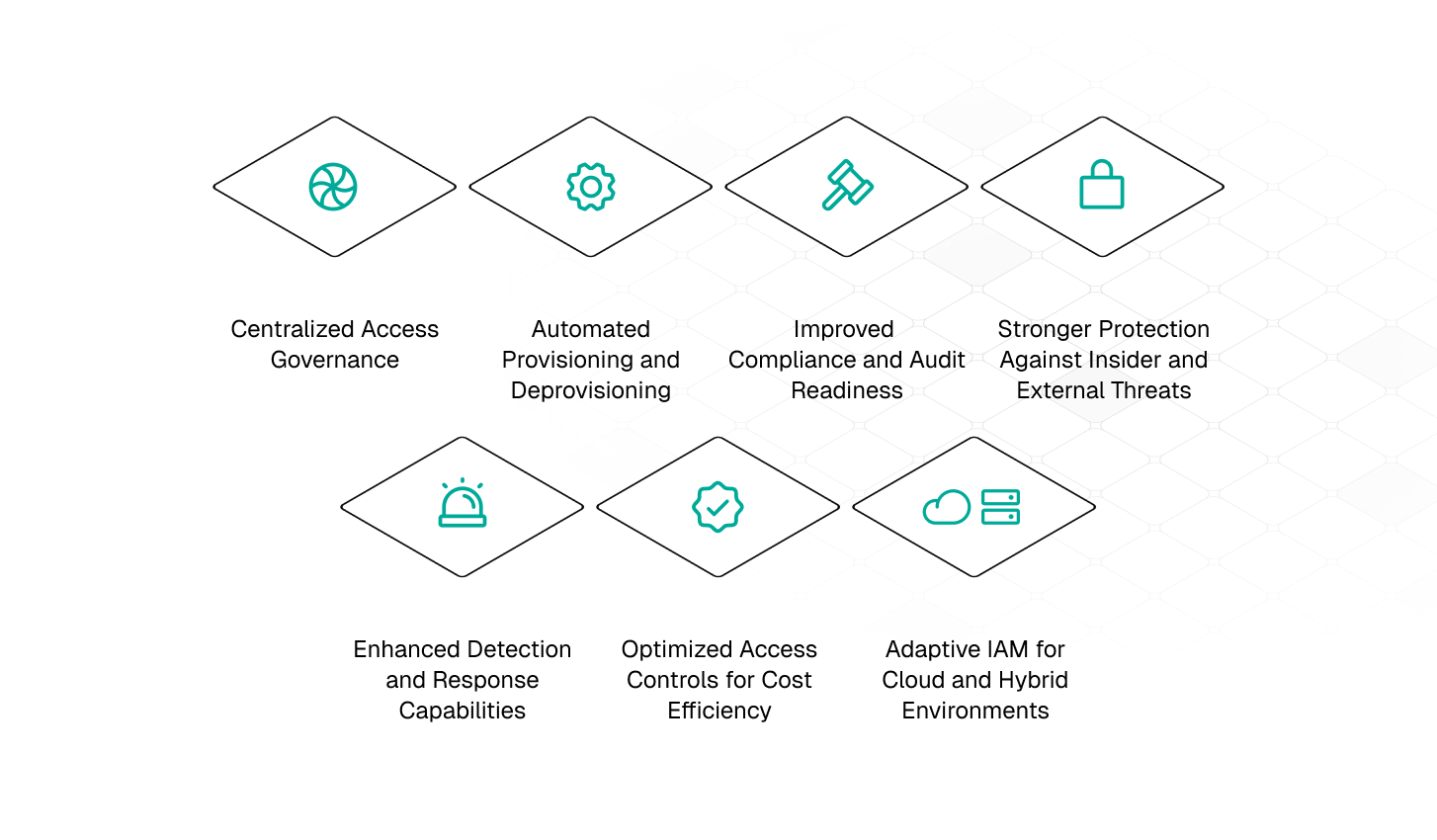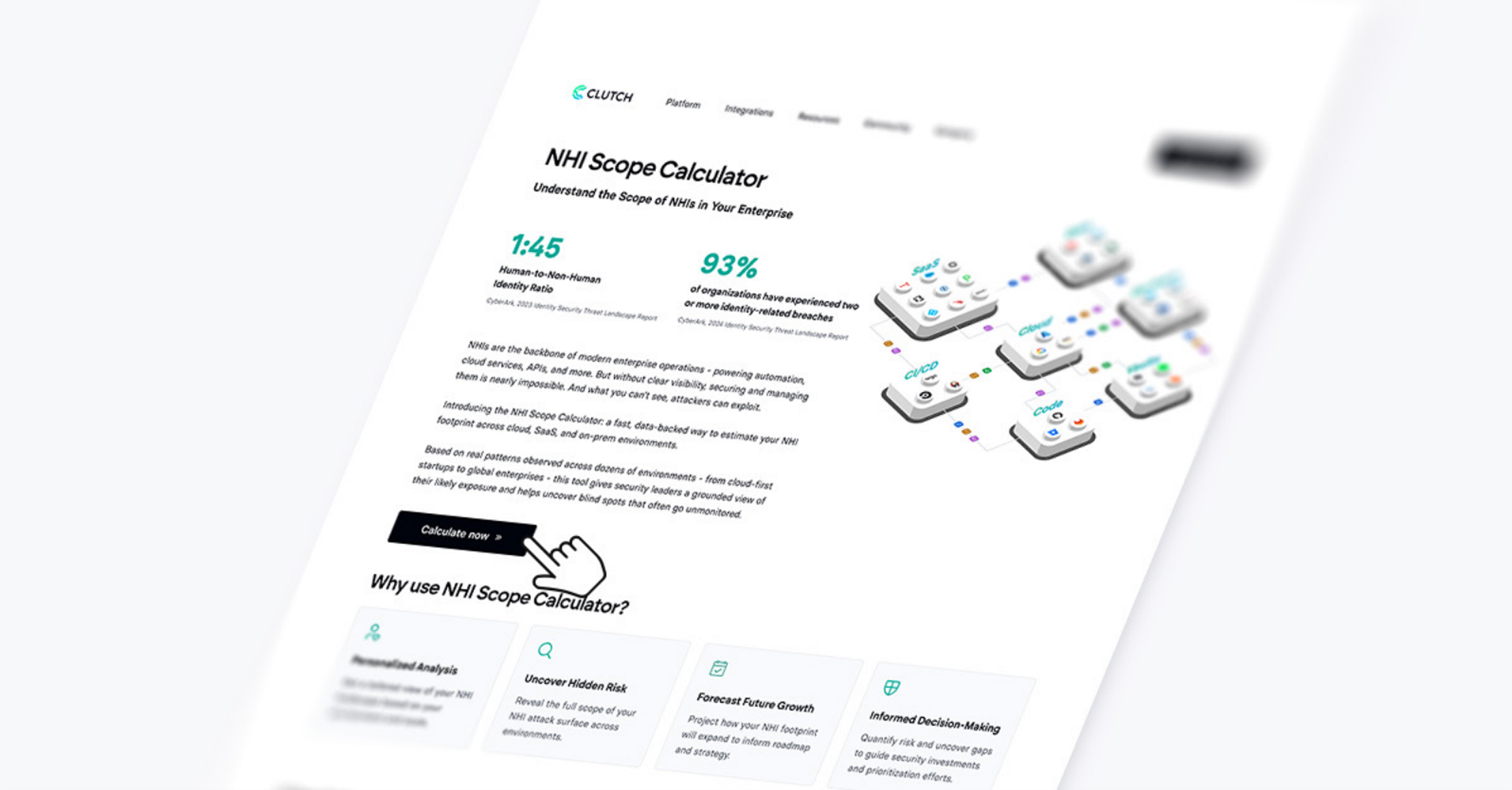What is the IAM Lifecycle?
The IAM (Identity and Access Management) lifecycle refers to the end-to-end process of managing digital identities and their access privileges throughout their entire time in an organization. From initial onboarding and provisioning to managing access requests, all the way to revoking access during offboarding — every identity follows a lifecycle that must be tightly controlled.
Proper identity lifecycle management is no longer a “nice-to-have.” It’s essential to ensure secure access, maintain compliance, and protect critical assets from both insider threats and external attackers.
Differences Between IAM and ILM
While Identity and Access Management (IAM) and Identity Lifecycle Management (ILM) are related, they focus on different aspects of identity security.
| Aspect | IAM (Identity and Access Management) | ILM (Identity Lifecycle Management) |
| Primary Focus | Managing access privileges and secure access to systems and data | Full lifecycle management of identities from creation to deactivation |
| Scope | Access management, authentication, and authorization | End-to-end identity governance, including access requests and revoking access |
| Key Deliverables | Identity governance, access policies, access permissions | Automated lifecycle management, including proper offboarding |
| Applies To | User accounts, privileged accounts, non-human identities | Human users and non-human identities |
Key Stages of the IAM Lifecycle
- Identity Onboarding and Provisioning
The lifecycle begins with creating and provisioning identities—both human and non-human. This includes setting up user accounts for employees, contractors, and partners, as well as provisioning machine identities like service accounts, API keys, and application credentials. Secure onboarding ensures appropriate access from day one. - Identity Authentication and Access Control
Once identities exist, they require strong authentication to verify legitimacy. Security controls, such as Multi-Factor Authentication (MFA), strengthen human identity security, while robust management and certificate-based authentication help protect non-human identities. Access control mechanisms enforce least privilege policies, ensuring that only the minimal access needed is granted and preventing unauthorized access. - Privilege Management and Role Assignments
Access permissions must align with job roles and operational needs. Overprovisioned human users and excessive privileges for non-human identities increase the attack surface. Role-based access control (RBAC) and policy-driven permissions help minimize risk while enabling necessary functionality. - Continuous Monitoring and Compliance Enforcement
Ongoing monitoring of permission configurations for both human and non-human identities is essential for enforcing governance policies and reducing risk. Real-time monitoring of identity activity is key to detecting anomalies that may indicate breach attempts. From automated access reviews and compliance checks to behavioral analytics, continuous monitoring helps prevent unauthorized access and mitigate threats. - Identity Certification and Recertification
Periodic access reviews are crucial to maintaining security hygiene across both human and non-human identities. Over time, access requirements change - employees switch roles, contractors leave, and applications evolve. For human identities, periodic reviews validate that users still need their assigned access. For non-human identities, certification ensures they are still in use and have the appropriate permissions. Automating these reviews prevents privilege creep, reduces the attack surface, and helps maintain compliance with security policies and regulatory requirements. - Identity Offboarding and Deprovisioning
When employees leave or their roles change, timely deprovisioning of both their user accounts and the non-human identities they own or manage ensures access is revoked. Similarly, non-human identities—such as obsolete API keys and unused service accounts—must be removed to prevent orphaned credentials from becoming security risks. Automated offboarding is key to reducing exposure.
Non-human identities require the same level of rigor as human identities. They outnumber human identities, often have excessive permissions, and suffer from weak governance. To mitigate these risks, dedicated security controls and oversight are essential. Automating NHI lifecycle management, enforcing least privilege, and implementing continuous monitoring are critical to securing the modern enterprise.
Benefits of IAM Lifecycle

A strong IAM lifecycle doesn’t just improve security—it streamlines operations, enhances compliance, and reduces costs. Here’s what organizations gain by managing identities effectively:
- Centralized Access Governance — A unified visibility and control over identities—both human and non-human—across all environments, reducing silos and security gaps and improving oversight. service account lifecycle management, and prevents orphaned identities from becoming security risks.
- Improved Compliance and Audit Readiness — Maintains continuous enforcement of identity governance policies, generates audit trails, and ensures adherence to security frameworks like SOC2 and ISO 27001.
- Stronger Protection Against Insider and External Threats — Enforces consistent access policies, minimizes privilege creep, and helps detect anomalies before they turn into breaches.
- Enhanced Detection and Response Capabilities — Enables real-time monitoring of identity activity, rapid detection of suspicious behavior, and automated response to contain threats before they escalate.
- Optimized Access Controls for Cost Efficiency — Eliminates unnecessary licenses, revokes unused permissions, and ensures least-privilege access to keep operational costs in check.
- Adaptive IAM for Cloud and Hybrid Environments — Enables seamless and dynamic identity movement across cloud, on-prem, and hybrid infrastructures while maintaining strict security controls.
Challenges in IAM Lifecycle Management
Managing identities—both human and non-human—at scale comes with significant challenges. As identity ecosystems grow more complex, organizations must evolve their IAM strategies to be automated, scalable, and risk-aware to keep up with security, compliance, and operational demands. Here are some of the biggest hurdles:
| Challenge | Why It Matters |
| Managing Identity Sprawl | Fragmented identities across cloud, SaaS, and on-prem environments create visibility gaps, making it harder to enforce security policies. |
| Ensuring Least Privilege | Overprovisioned access permissions increase risk exposure, making it easier for attackers to exploit excessive privileges. |
| Securing Privileged Access | Privileged accounts are prime targets for attackers, and without strict controls, they can become the gateway to critical system compromise. |
| Automating Identity Governance | Manual processes can’t scale with cloud speed, leading to misconfigurations, delayed offboarding, and compliance failures. |
| Compliance & Regulations | Complex regulatory requirements demand consistent identity lifecycle management to ensure audit readiness. |
| Securing Machine & Service Identities | Non-human identities often have excessive, static privileges with little oversight, making them a high-risk attack vector. Their rapid proliferation across modern organizations requires centralized and automated solutions to efficiently manage scale. |
Best Practices for Effective IAM Lifecycle Management
IAM isn’t just about managing access—it’s about continuously adapting to identity risks at scale. To stay ahead of evolving identity threats, organizations should adopt these best practices:
- Implement Role-Based and Attribute-Based Access Controls (RBAC & ABAC) to ensure human user access permissions align with roles, responsibilities, and contextual attributes, minimizing privilege creep.
- Leverage Automated Provisioning and Deprovisioning — Integrate IAM with HR and IT workflows to grant and revoke access dynamically, preventing orphaned accounts and reducing manual errors in managing both human identities or non-human identities associated with specific individuals.
- Adopt Zero Trust and Continuous Verification — Apply Zero Trust principles by verifying every access request, continuously monitoring identity behavior, and enforcing least privilege for both human and machine identities.
- Monitor Identity Risks with AI-Powered Analytics — Use AI-driven anomaly detection to identify unusual activity, such as privilege escalations, lateral movement, or unauthorized access attempts.
- Enforce Strong Authentication and Policies — Require security controls such as phishing-resistant MFA to secure human identities and use certificate-based authentication for machine identities.
- Implement Strong Controls for non-human identities — Treat API keys, tokens, and service accounts as first-class citizens in your IAM strategy by enforcing lifecycle management, least privilege policies, and Zero Trust principles.
Strategies for Securing NHIs in IAM Lifecycle
To reduce risk, organizations must integrate NHIs into the IAM lifecycle with the same level of control as human identities. Here’s how:
- Treat NHIs as part of the core identity lifecycle, not as outliers. Apply the same level of governance, provisioning, and deprovisioning policies to NHIs as you do for human users.
- Apply lifecycle management controls specifically designed for NHIs. Automate discovery and revoke unused or stale NHIs to minimize security gaps. Conduct regular secret rotation, but remember that rotation alone is not an effective security control—attackers can exploit leaked secrets within minutes, far outpacing any rotation cadence. Relying on rotation as a primary defense creates a false sense of security.
- Use ephemeral identities when possible. Eliminate standing privileges by issuing short-lived credentials and granting access only when needed, reducing exposure to compromised credentials.
- Continuously monitor NHIs for misuse, drift, and unauthorized access. Track behavior patterns, detect anomalies, and trigger automated responses when NHIs operate outside their intended scope.
- Incorporate NHIs into your identity governance processes. Enforce periodic access reviews, apply certification policies, and ensure NHIs comply with least privilege principles.
Emerging Trends in IAM Lifecycle Management
AI and Machine Learning
AI is a double-edged sword in IAM. On one side, it enhances identity governance by detecting anomalous access requests, predicting risky behaviors, and automating decisions to reduce human error. On the other hand, the rise of Agentic AI - AI systems that operate autonomously - will drive an unprecedented increase in the use of non-human identities. These AI-driven agents will require API keys, tokens, and service accounts to interact with enterprise systems, making NHIs even more critical attack targets. As AI adoption accelerates, organizations must rethink IAM strategies to secure NHIs at scale.
Shifting IAM to the Forefront of Security: Closing the Gaps Left by Infrastructure-Based Solutions, Such as CSPM
Traditional security solutions like CSPM (Cloud Security Posture Management) and SSPM (SaaS Security Posture Management) focus on securing infrastructure but fail to address the complexity of non-human identities. Unlike human users, NHIs don’t operate within fixed environments—they move dynamically across cloud platforms, SaaS applications, on-prem systems, code repositories, and CI/CD pipelines. This fragmented nature makes them difficult to track, govern, and secure. To close this gap, organizations must prioritize IAM as a foundational security layer, adopting identity-first security mindset and treating NHIs as first-class identities. Without this shift, NHIs will remain a security blind spot—one that attackers are already exploiting.
Adaptive Authentication and Risk-Based Access Control
Modern identity and access solutions apply dynamic risk scoring to NHIs and their access requests, adjusting authentication based on context. Instead of relying on static rules, risk-based access control (RBAC) uses real-time behavioral analytics, context factors, and identity trust levels to determine access decisions. For example, an NHI making an unusual request—such as accessing a new region or escalating privileges—may trigger an alert or be blocked outright. This approach reduces reliance on static permissions and prevents excessive access from being exploited. As cyber threats become more sophisticated, adaptive IAM strategies that dynamically enforce access control based on real-time risk signals will become a necessity.
Automated Identity Threat Detection and Response (ITDR)
With identity-based attacks on the rise, Identity Threat Detection and Response (ITDR) is emerging as a critical security layer. ITDR solutions integrate IAM with threat intelligence, behavioral analysis, and automated remediation to detect credential misuse, privilege escalation, and identity-based attacks in real time. In the IAM lifecycle, ITDR plays a key role in continuously monitoring NHIs and human identities, responding to threats before they cause damage.
How Clutch Security Enhances IAM Lifecycle Management
Clutch Security’s platform enhances IAM lifecycle management for all NHIs, enabling organizations to regain visibility, enforce control, reduce risk, and prevent credential-based attacks across all environments. By securing, governing, and continuously monitoring NHIs, Clutch ensures that these critical identities don’t become security blind spots.
- Comprehensive NHI Mapping: Clutch discovers every NHI with deep context using Identity Lineage™, tracing origins, associated individuals, access patterns, and risks.
- Complete Lifecycle Management: Enforces least privilege access, eliminating stale or over-privileged NHIs to reduce risk and improve operational efficiency.
- Efficient Risk Mitigation: Automates risk identification and provides remediation playbooks for efficient mitigation.
- Real-Time Threat Detection: Continuously monitors credential misuse, abnormal behavior, and unauthorized access attempts, stopping breaches before they escalate.
- Zero Trust Enforcement: Extends Zero Trust principles to NHIs, enforcing continuous verification, least privilege policies, and eliminating long-lived credentials to prevent misuse.
Conclusion
Organizations can no longer afford to overlook IAM lifecycle management—it's a fundamental requirement for modern security. It’s critical for securing access, maintaining operational efficiency, and meeting regulatory compliance. As digital identities continue to grow across modern environments, organizations need identity lifecycle management solutions that integrate automation, identity governance, and Zero Trust principles.
Critically, effective IAM lifecycle management must prioritize non-human identities, ensuring they receive the same level of security and oversight as human identities. Clutch Security makes this possible by providing automated, consistent control and security across every phase of the NHI lifecycle. Ready to take your Non-Human Identity Security to the next level? Let’s talk about how Clutch can help.





